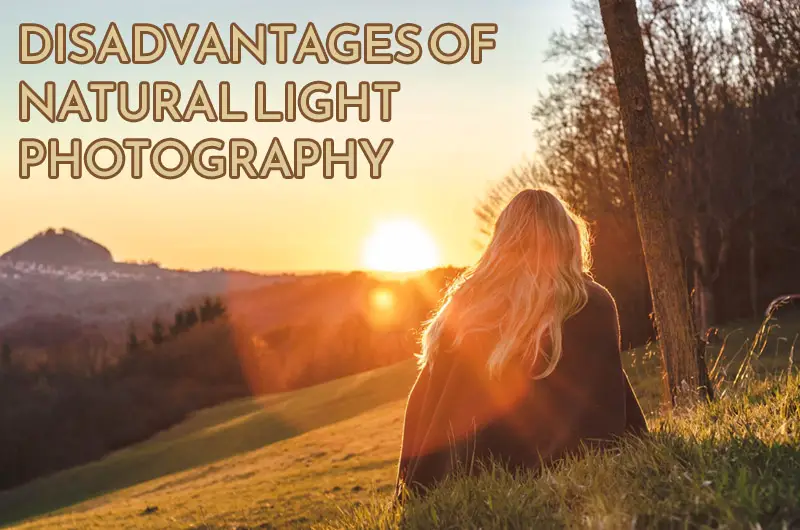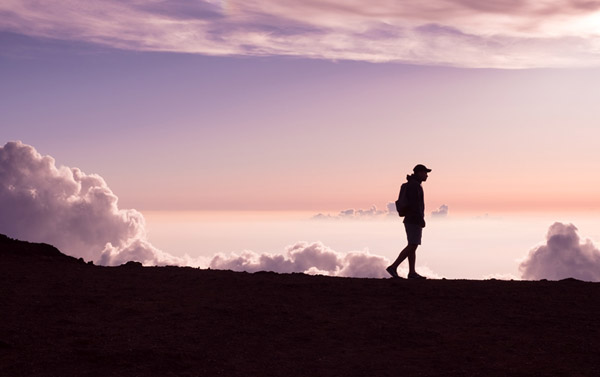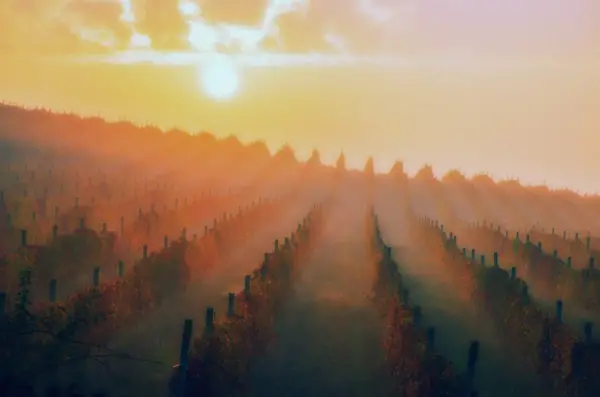As a photographer, you may be using both natural light as well as artificial light sources like flash or continuous lights for photographing various subjects. Both these types of light have got their advantages as well as disadvantages. Even though there are many advantages of using natural light which people praise, it comes with significant disadvantages as well.

In this article I will describe all the drawbacks and disadvantages of using natural light in photography.
Disadvantages of using natural light for photography include inconsistency, difficulty to control, changes in quality and intensity, availability, dependence on weather, need for filters, variations in color temperature, direction, limits on shutter speed and others described below.
By looking at the issues with natural light, you will be able to understand the importance of using artificial lights in photography.
1. Inconsistency of natural light
As a photographer, you want the light to be consistent throughout the time when you are shooting. But, the natural light from the sun or moon is not a consistent one. The quality and the intensity of the natural light changes as the planets move and rotate.
It is really tough to get reasonable control of natural light. It will vary at different times of the day at different places.
2. Time constraints and productivity
The natural lighting conditions are best suitable for photography only during the morning and evening time. The light is very strong in the afternoon. So, most photographers will not do any shoots during the afternoon period. Thus, if you depend on the natural light alone for your shoots, you will be wasting the afternoon session. It will affect the productivity of your whole process.
3. Harsh shadows from natural light
The sunlight can create harsh shadows, especially when you are shooting in the mid-day sun. In such situations, you will have to depend on artificial light modifiers like light reflectors and light diffusers to eliminate harsh shadow formation.
Harsh shadows detract from your intended subject rather than adding value to the photograph.
4. Weather dependence
Natural light is very much dependent on the weather. If you have rainy weather at the location, then the light will be soft and dull. It will detract from the photo and make it unappealing.

You will likely need to use high ISO settings to deal with the lower light as well as a large aperture, which will cause noise and limit the resulting photograph depth of field.
Weather of course can be detrimental to your equipment. You will be limited in what camera and lenses you can use and for how long.
If the weather is warm and dry, then the intensity of the light will be very strong. Such strong lights will result in harsh shadows. If you are doing an outdoor photo shoot that is not well suited for the type of light present that day, it will not be possible.
5. Availability at night
At night, you will not have the powerful sun as a light source. You will only have the moon. The sun can be dimmed or diffused using various tricks. The light from the moon is most often not enough to light up your subject. Thus, you cannot depend on natural light at night for your photo shoots most of the time. You will have to rely on artificial lights at these times of the day.
You will need to use a tripod which will bring its own limitations as to where and how you can shoot. Long exposures are tough to do in windy situations or when anything moves in the photo.
You can use the natural light from the stars and the moon if you are doing long exposure photography. You can use the natural night time light to photograph stars and the milky way, however that requires complex, often expensive equipment.
6. Changing direction of light
The sun keeps on moving from morning to evening (of course in reality it never stops). This movement not only varies the direction of the light but also varies the intensity of the light. It is really tough to control this light. You need to make the necessary adjustment in your camera settings if you want to shoot for a large part of the day with the sun as your only light source.
Changing direction of light can be very important depending on the type of shoot you are attempting. For example, a photo shoot of a statue or building often needs to be done at a specific time of day. Otherwise you will not get the best possible photograph of the subject since most subjects look best from a particular angle. It is unlike shooting a movable object such as a car that can be rearranged as you please.
7. Light color temperature variation
The natural light color temperature varies throughout the day and with changes in weather. It averages about 5500K but can vary from 4000K in early morning to 8000K for snow scenes.
There is also variation depending on where in the world you are. In the northern hemisphere, the average color temperatures are lower (ex. 5000K) than in the central latitudes (ex. 6000K).
You will get a soft golden light during the sunrise and sunset with color temperatures in the 4000K range. There is no wonder photographers wait all day for the “golden hour”. Of course, this is not possible if you are traveling and need to leave the location.
So, the white balance settings will be different at different times. As a result, the color tone of the image will be different. You may not want these tones in your picture.
8. Quality of light varies in different places
The quality of the natural light will differ from one place to another. The pollution level of a location is one factor that affects the quality of lighting. The amount of clouds present in an area will also have an effect on the quality of the natural light. If there are many clouds present in the atmosphere, then these clouds will help to soften the light to an extent as they act like light diffusers.
If you are doing a photo shoot inside of a forest, then you will be getting a soft diffused light because of the foliage of the trees in the forest. Natural light on a snow covered mountain will be harsh and very bright. That is why ski goggles are dark and your phone camera or Gopro has issues taking photos of your adventures.
9. Sun behind the subject
During a photo shoot, you want the best possible scenery at the location to be behind your main subject to make the picture as appealing as possible. But, at times, when you position your subject in this manner, then the sun will be behind your subject. So, you will end up in a silhouette image of the subject if you depend only on the natural light for your shots.
Silhouettes may be cool in some cases, such as when its not important to see the face or details of the person, but most of the time when you include a person you want to see those clearly.

If you try to expose for your subject, then you will end up blowing out the details in the background. Here, the only solution is to combine the natural light with artificial light to expose for both the background as well as the subject. You can’t rely on the natural light alone. You need to use a flash or continuous light.
10. Light issues with a fashion photo shoot
If you are a photographer who is doing professional fashion photography, you are unlikely to use sunlight alone for your outdoor shoots. If you use the sunlight alone, then you may not get the right kind of exposure on your subject. So, you may end up having to lift the shadows or pulling down the highlights of some parts of the image during the photo editing stage.
Adjusting these settings beyond a particular value will result in bringing in some noise in the image. So, you will have to reduce this noise in the picture. Removing the noise will result in the loss of some details in other parts of the image. When you supply such photos for print in magazines, then the final printed image may not look that good. So, as a professional fashion photographer, you cannot depend on the natural light alone for your outdoor shoot.
11. Dependence on lens filters
The use of natural light alone for photography will make you invest in lens filters that help to modify the light entering the camera. For example, you may want to use a circular polarizer filter to increase the color saturation, to remove the unwanted reflections from water, or to remove some amount of haze in the scene.
You may also need an ND filter to cut off the extra light that is entering the camera. This light cut-off will be required if you want to use a particular combination of aperture, shutter speed, and ISO for the exposure to get the desired results. So, you will have to spend on these additional camera accessories too.
12. Color reproduction
If you are a professional photographer, then you want the colors to be accurate in your images. However, when you shoot outdoors with the natural light alone, then there can be some unwanted colored lights falling on the subject due to reflection from objects nearby. Thus, you may not be able to get the right colors in the picture. This issue can be easily solved if you use color-corrected artificial lights for the shoot.
13. Issues with action photography
If you are a sports photographer, then you will be capturing lots of action shots. Capturing action images demands higher shutter speeds to freeze the action. When you use higher shutter speeds, the amount of light entering the lens will be less if you are using natural light alone, even if you are using a fast lens. So, the image will not be properly exposed.
When you try to expose the scene properly in-camera, you will be getting a lower shutter speed. It will result in a blurry image. So, you cannot rely on natural light alone if you are a sports photographer.
15. Negative effects of haze
The haze in a scene can make the pictures soft. It will have a significant impact on the quality of the images. The haze is more prominent in the afternoon. Haze occurs when the lower air is very dry or when dry air is coming.

If you have a photoshoot in the afternoon with sunlight as your light source, then there is a chance that the haze can ruin your image. The effect will be more if you carry out the shoot in a desert.
16. Photographing nocturnal animals and birds
If you are a wildlife photographer who is into photographing nocturnal animals and birds, then you can’t depend on the natural light source at night, the moon, for photography. Instead, you will have to use an artificial light like a torch or a flash to get the right exposure, unless you use nightvision. That, however, is often a single color and not appealing.
You can watch this video from Manny Oritz to learn the pros and cons of using natural light for photography.
I hope after reading this article you are now aware of the drawbacks of using natural light and know how to adjust for them when photographing.
Read this article to find out how to use natural light for photography.








